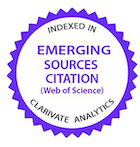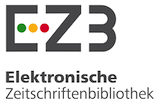Assessment of the dairy chain sustainability through best management practices Brazil’s programs
DOI:
https://doi.org/10.1590/1809-6891v26e-79031EAbstract
This study aimed to assess six primary Best Management Practices programs implemented in Brazil concerning the sustainability of the dairy chain. This assessment was based on the measures outlined in the FAO & IDF Guide to Good Dairy Farming Practices. The six programs analyzed included the Safe Food Program, the Good Practices for Sustainability, the Good Practices on the Farm, the Quality Milk Production, the Educampo, and the Full Bucket programs. The characteristics of each program were categorized into six areas: animal health, milking hygiene, nutrition (food and water), animal welfare, environment, and socioeconomic management. Each category was further divided into subcategories. Qualitative data from the programs were converted into quantitative responses and subjected to statistical analysis. The results revealed that the Safe Food Program was the only one that demonstrated a strong alignment with the Guide across all categories. The Good Practices for Sustainability Program and the Good Practices on the Farm Program exhibited medium to high correspondence with the Guide. However, they both require significant improvements in animal welfare. Additionally, the Good Practices on the Farm Program needs enhancements in the environmental management category. The Quality Milk Production Program showed low alignment with the Guide, indicating a need for extensive improvements in nutrition (food and water), animal welfare, environmental practices, and socioeconomic management. The Educampo and Full Bucket programs exhibited very low correspondence with the Guide, requiring substantial enhancements in all categories except for socioeconomic management. Consequently, these two programs are best utilized as supplementary initiatives alongside more established programs, such as the Safe Food Program, the Good Practices for Sustainability Program, or the Good Practices on the Farm Program, effectively addressing important socioeconomic management gaps.
Downloads
References
USDA. United States Department of Agriculture. Dairy and Products Annual. [Internet]. USDA; 2023 [cited 2024 Apr 03]. Available from: https://fas.usda.gov/data/brazil-dairy-and-products-annual-10.
Costa NS, Hermuche P, Cobuci, JA, Paiva SR, Guimaraes RF, Carvalho Jr OA, Gomes RAT, Costa CN, McManus CM. Georeferenced evaluation of genetic breeding value patterns in Brazilian Holstein cattle. Genetics and Molecular Research. 2014; 13: 9806-9816. https://doi.org/10.4238/2014.November.27.8
Costa NS, Silva MVG, Panetto JCC, Machado MA, Seixas L, Peripolli V, Guimarães RF, Carvalho Jr OA, Vieira RA, McManus C. Spatial dynamics of the Girolando breed in Brazil: analysis of genetic integration and environmental factors. Tropical Animal Health and Production. 2020; 2: 3869-3883. https://doi.org/10.1007/s11250-020-02426-z
Marcondes MI, Brandão VLN, Ferreira GAT, Silva AL. Impact of farm size on milk quality in the Brazilian dairy industry according to the seasons of the year. Ciência Rural. 2017; 47: e20161004. https://doi.org/10.1590/0103-8478cr20161004
Candiotto L, Missio RL, Campos JRR, Soares AB, Candiotto F, Severo IK, Franceschi F, Elejalde DAG, Silveira ALF. Milk quality in small farms from Southern Region of Brazil. Ciência Rural. 2020; 50: e20200337. https://doi.org/10.1590/0103-8478cr20200337
Paixão MG, Souza GN, Lopes MA, Costa GM, Abreu LR, Pinto SM. Socioeconomic and technical assistance factors related to total bacteria count and somatic cell count of milk from bulk tanks in southern Minas Gerais State, Brazil. Ciência Rural. 2015; 45: 1241-1248. https://doi.org/10.1590/0103-8478cr20140895
Bánkuti FI, Prizon RC, Damasceno JC, Brito MM, Pozza MSS, Lima PGL. Farmers’ actions toward sustainability: a typology of dairy farms according to sustainability indicators. Animal. 2020; 14: s417-s423. https://doi.org/10.1017/S1751731120000750
Costa HBA, Dantas RM, Alvarenga MB, Peripolli V, Tanure CB, McManus C. Programs for best dairy management practice in Brazil and their applications. Journal of Cleaner Production. 2018; 176: 1026-1033. https://doi.org/10.1016/j.jclepro.2017.11.240
FAO, IDF. Food and Agriculture Organization of the United Nations, International Dairy Federation. Guide to good practices in dairy farming. Animal Production and Health, Guidelines [Internet]. FAO, IDF; 2013. [cited 2016 Aug 19] Available from: http://www.fao.org/docrep/017/ba0027pt/ba0027pt.pdf
De Silva AASD, Kanugala KANP, Weerakkody NS. Microbiological quality of raw milk and effect on quality by implementing good management practices. Procedia Food Science. 2016; 6: 92-96. https://doi.org/10.1016/j.profoo.2016.02.019
Bechini L, Costamagna C, Zavattaro L, Grignani C, Bijttebier J, Ruysschaert G. Drivers and barriers to adopt best management practices. Survey among Italian dairy farmers. Journal of Cleaner Production. 2020; 245; 118825. https://doi.org/10.1016/j.jclepro.2019.118825
FAO, OIE. Food and Agriculture Organization of the United Nations, World Organization for Animal Health. Guide to Good Farming Practices for Animal Production Food Safety [Internet]. FAO, OIE; 2010. [cited 2016 Jun 10]. Available from: http://www.oie.int/fileadmin/Home/eng/Food_Safety/docs/pdf/3_Lang_Good_farming_practices.pdf
FAO. Food and Agriculture Organization of the United Nations. Training to implement good animal welfare practices. FAO Expert Meeting Report [Internet]. FAO; 2009. [cited 2018 May 10]. Available from: http://www.fao.org/docrep/012/i0483pt/i0483pt00.htm>.
Moreira TF, Nicolino RR, Meneses RM, Fonseca GV, Rodrigues LM, Facury Filho EJ, Carvalho AU. Risk factors associated with lameness and hoof lesions in pasture-based dairy cattle systems in southeast Brazil. Journal of Dairy Science. 2019; 102: 10369- https://doi.org/1037810.3168/jds.2018-16215
Martins CF, Fonseca-Neto AM, Bessler HC, Dode MAN, Leme LO, Franco MM, McManus CM, Malaquias JV, Ferreira IC. Natural shade from integrated crop-livestock-forestry mitigates environmental heat and increases the quantity and quality of oocytes and embryos produced in vitro by Gyr dairy cows. Livestock Science. 2021; 244: 104341. https://doi.org/10.1016/j.livsci.2020.104341
Reis NS, Ferreira IC, Mazocco LA, Souza ACB, Pinho GAS, Fonseca Neto AM, Malaquias JV, Macena FA, Muller AG, Martins CF, Balbino LC, McManus CM. Shade modifies behavioral and physiological responses of low to medium production dairy cows at pasture in an integrated crop-livestock-forest system. Animals. 2021; 11: 2411. https://doi.org/10.3390/ani11082411
Damian JM, Matos ES, Pedreira BC, Carvalho PCF, Souza AJ, Andreote FD, Premazzi LM, Cerri CEP. Pastureland intensification and diversification in Brazil mediate soil bacterial community structure changes and soil C accumulation. Applied Soil Ecology. 2021; 160: 103858. https://doi.org/10.1016/j.apsoil.2020.103858
Cervo HJ, Barcellos JOJ, Peripolli V, Colle G, McManus, C. Economic values for production, functional and fertility traits in milk production systems in Southern Brazil. Archivos de Zootecnia. 2017; 66; 421-429. https://www.redalyc.org/pdf/495/49553112014.pdf
Mee JF, Boyle LA. Assessing whether dairy cow welfare is “better” in pasture-based than in confinement-based management systems. New Zealand Veterinary Journal. 2020; 68: 168-177. https://doi.org/10.1080/00480169.2020.1721034
IDF. Internacional Dairy Federation. Environmental/Ecological impacts of the dairy sector: literature review on dairy products for an inventory of key issues, list of environmental initiatives and influences on the dairy sector. Bulletin of the International Dairy Federation, 436 [Internet]. IDF; 2009. [cited 2017 Jan 05]. Available from: http://www.ukidf.org/documents/Bulletin436.pdf
Riedl M, Maia CM. Specialization and internal potencial in the regional analyses. Revista Brasileira de Gestão e Desenvolvimento Regional. 2007; 3: 27-48.
OIE. World Organization for Animal Health. The role of the Veterinary Services in food safety. Bulletin number 1 [Internet]. OIE; 2008. [cited 2016 Jan 10]. Available from: http://www.oie.int/fileadmin/Home/eng/Publications_%26_Documentation/docs/pdf/bulletin/Bull_2008-1-ENG.pdf
Cervo H, Peripolli V, Bremm B, Barcellos JOJ, Borges JB, McManus C. Spatial distribution of productive, environmental, and socio-economic factors to discriminate dairy cattle production in the south of Brazil. Ciência Animal Brasileira. 2018; 19: e-33194. https://doi.org/10.1590/1809-6891v19e-33194
Oliveira AA, Seixas L, Azevedo HC, Teixeira KM, McManus C, Melo CB. Evaluation of the use of good practices in dairy cattle herds. Revista Brasileira Medicina Veterinária e Zootecnia. 2015; 37: 73-77. https://bjvm.org.br/BJVM/article/view/340
Published
How to Cite
Issue
Section
License
Copyright (c) 2025 Brazilian Animal Science/ Ciência Animal Brasileira

This work is licensed under a Creative Commons Attribution 4.0 International License.
Authors who publish with this journal agree to the following terms:
- Authors retain copyright and grant the journal right of first publication with the work simultaneously licensed under a Creative Commons Attribution License that allows others to share the work with an acknowledgement of the work's authorship and initial publication in this journal.
- Authors are able to enter into separate, additional contractual arrangements for the non-exclusive distribution of the journal's published version of the work (e.g., post it to an institutional repository or publish it in a book), with an acknowledgement of its initial publication in this journal.
- Authors are permitted and encouraged to post their work online (e.g. in institutional repositories or on their website) prior to and during the submission process, as it can lead to productive exchanges, as well as earlier and greater citation of published work (See The Effect of Open Access).
Data statement
-
The research data is available on demand, condition justified in the manuscript































